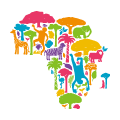Useful Report / Tool / Guideline
Internationally developed and publicly available tools, systems and guidelines which can be
utilized by African countries for addressing issues in natural resource management have been
identified and are shown below in line with the NbS approach category.
 1: Effective policy and planning process
1: Effective policy and planning process
1-1 Policy and planning
Lessons for working well together in African forests Policy Brief
International Tropical
Timber Organization
This policy brief summarizes the lessons learnt from ten ITTO projects in West and Central Africa and proposes areas for future collaboration between ITTO and the Tokyo International Conference on African Development (TICAD).
IUCN Global Standard for Nature-based Solutions : first edition
International Union
for
Conservation of
Nature and
Natural Resources
It is a user-friendly framework for verifying, designing and scaling up NbS and lists the Criteria and Indicators, as adopted by the 98th Meeting of the IUCN Council in 2020.
 2: Data-and science-based policy formulation and implementation and montoring and evaluation
2: Data-and science-based policy formulation and implementation and montoring and evaluation
2-1 Foerst data monitoring
JICA-JAXA Forest Early Warning System in the Tropics
Japan International
Cooperation Agency,
Japan Aerospace
Exploration Agency
JICA and JAXA launched the JJ-FAST in November 2016 as their commitment under the Forest Governance Initiative, which was announced at UNFCCC COP 21 in Paris in 2015.
JJ-FAST is a web-based system using JAXA’s ALOS-2 to monitor tropical forests in 78 countries every 1.5 months and release deforestation data, even in the rainy season. Users can easily access the data for deforested areas from PCs and mobile devices and download the data.
SEPAL Forest and Land Monitoring for Climate Action
Food and Agriculture
Organization of the
United Nations
Accurate information is critical to managing natural resources sustainably. Developed by the Food and Agriculture Organization of the United Nations (FAO), System for Earth Observation Data Access, Processing and Analysis for Land Monitoring (SEPAL) helps countries monitor and report on forests and land use. An easy-to-use interface powered by cloud-based super computers, SEPAL offers users unparalleled access to satellite data, paving the way for improved climate change mitigation plans and data-driven land-use policies.
2-2 Ecosystem data monitoring
AURORA: Assessment, Understanding and Reporting Of Restoration Actions
Food and Agriculture
Organization of the
United Nations
AURORA aims to help stakeholders develop a monitoring system tailored to their needs by identifying indicators and metrics to monitor progress toward their set goals. Using real data, they can create systems that support and monitor their restoration efforts.
The LEAP Nature Risk Assessment Approach
Taskforce on
Nature-related
Financial Disclosures
Building on insights from the Nature-related Data Catalyst, the TNFD has created a beta version of an online searchable Tools Catalogue that outlines tools that organisations can use to apply each phase of the LEAP approach. The Catalogue will continue to be updated over time.
 3: Inclusive and impactful project implementation
3: Inclusive and impactful project implementation
3-1 Forest area
Guidelines for Implementing REDD-plus
Forestry and Forest
Products Research
Institute,
REDD Research
and
Development Center
The FFPRI has conducted a considerable amount of research in forests in developing countries, particularly South-East Asia. Within Japan. FFPRI has also supported efforts to develop the J-Credit Scheme as well as systems for estimating GHG removals by domestic forests. As a result of these activities, the FFPRI has built up considerable insights and developed networks with other related institutions. By effectively utilizing these accumulated assets, it is thought that the FFPRI can help solve the major technical issues related to
REDD-plus activities.
3-2 Out-of-forest area
Food and Agriculture
Organization of the
United Nations
It is the first time that global guidelines on dryland restoration are made available. These guidelines target two main groups – policymakers and other decision-makers, and practitioners – because both have the power to bring about positive change. While they should be tailored to suit regional and local contexts, they present the essential components for the design, implementation and sustainability of restoration initiatives that can help build ecological and social resilience and generate benefits for local livelihoods.
3-3 Protected areas and buffer zones
Nature-based Solutions and protected and conserved areas
International Union
for Conservation of
Nature and
Natural Resources
Nature-based Solutions (NbS) are seen as a response to many societal challenges. It is becoming increasingly obvious that protected and conserved areas (PCAs) are a major vehicle for NbS and often essential to their success. This publication argues that with appropriate and implemented safeguarding policies, collectively, NbS and PCAs represent some of the best routes we have for providing a decent future for people and the planet by combining many key elements of sustainable development.
3-4 Industrial plantation area
Environmental Guidelines for Commercial Forestry Plantations in South Africa
Forestry South Africa
The objective of the fourth edition is to provide updated guidelines on the
management of plantation forestry that minimises the impacts of forestry
operations on the physical environment.
The environmental guidelines include statutory requirements as well as best
management practices that are recommendations which will minimise the impact
of forestry operations on the environment.
3-5 Wetland area
NEW GUIDELINES FOR MANAGEMENT PLANNING FOR RAMSAR SITES AND OTHER WETLANDS
The Convention on
Wetlands of
International
Importance
especially as
Waterfowl Habitat
These Guidelines replace the Ramsar Guidelines on management planning for Ramsar sites and other wetlands adopted by Resolution 5.7 of COP5 in 1993 and published in the Ramsar Handbook 8 (January 2000). They provide additional guidance on environmental, social and economic impact assessment and cost-benefit analysis, zonation and multiple use, design and maintenance of buffer zones and the application of the precautionary
approach.
MANGROVE ECOLOGICAL RESTORATION GUIDE: LESSONS LEARNED
Center for
International
Forestry Research
This guide provides a strategy for integrating the social, economic, and ecological components rather than specific methods. The strategy is presented in
an orderly and standardized manner for better understanding, comprising three main stages: planning, implementation, and evaluation. By using conceptual and technical bases as a reference framework, the strategy should be applicable to all types of mangroves and impact levels.
3-6 Other crosscutting matters
Guidelines for forest landscape restoration in the tropics Policy Brief
International Tropical
Timber Organization
This is the policy brief for the guidelines on forest landscape restoration (FLR) in the tropics which are based on vast recent experiences in implementing FLR in the field and the invaluable inputs of forest landscape specialists and institutions from around the globe.
Southern African
Development
Community,
Japan International
Cooperation Agency
The SADC treaty stipulates that SADC commits Member States to promoting common political values, systems and other shared values through regional integration. You can access the three SADC Regional Guidelines (Forest Information System (RFIS) Design Document, SADC Learner Guide for Forest Fire Management (FFM), SADC Regional Guideline for Participatory Forest management (PFM) and SADC Forestry Strategy 2020-2030 on this website.
 4: Resources for scaling up operations, etc.
4: Resources for scaling up operations, etc.
4-1 Extention measures
Farmer Field School Implementation Guide FARM FORESTRY AND LIVELIHOOD DEVELOPMENT
Kenya Forest Service,
Food and Agriculture
Organization of the
United Nations,
Japan International
Cooperation Agency
This guide is based on the experience gained from the Intensified Social Forestry Project (ISFP) in Semi-Arid Areas in Kenya, financed by the Japan International Cooperation Agency (JICA) and implemented by the Kenya Forest Service.
4-2 Securing funding
AI-CD – African Initiative for Combating Desertification to Climate Change in the Sahel and the Horn of Africa
AI-CD – African Initiative for Combating Desertification to Climate Change in the Sahel and the Horn of Africa
The Sahel and Horn of Africa regions face mounting developmental challenges. This page provides basic information on funds available to address desertification, land degradation, climate change and drought. Furthermore, it highlights available international financial sources to promote positive development to combat desertification in the Sahel and Horn of Africa regions.

